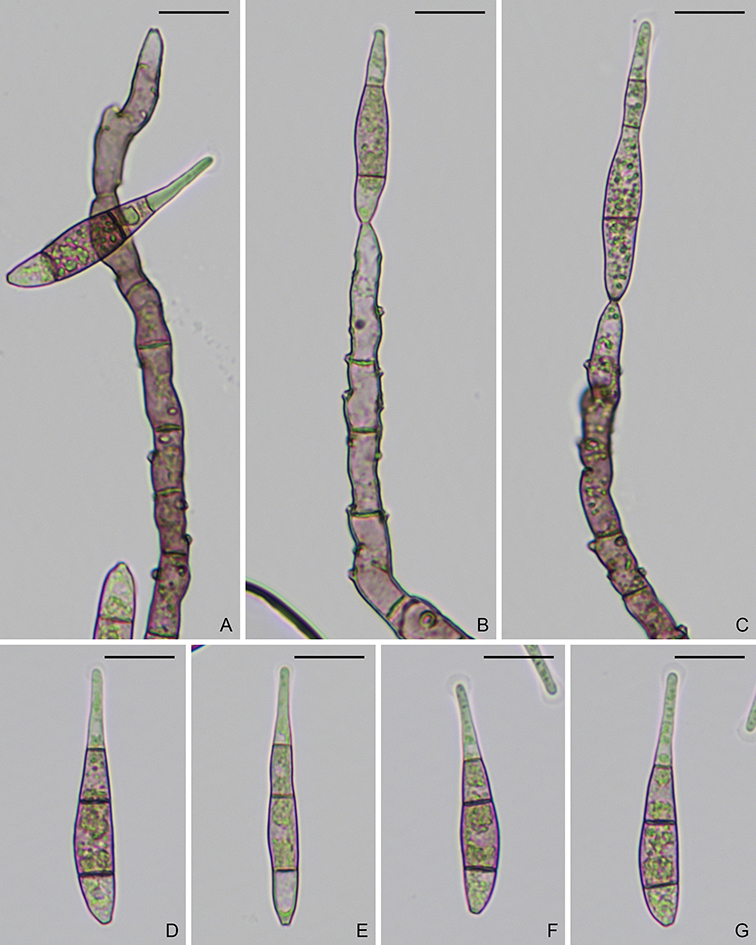
Pyriculariopsis parasitica (Sacc. & Berl.) M.B. Ellis, Dematiaceous Hyphomycetes: 207. 1971. (Type species).
MycoBank: MB 322173.
≡ Helminthosporium parasiticum Sacc. & Berl., Revue mycologique, Toulouse 11(no. 44): 204. 1889.
= Pyricularia musae S. Hughes, Canadian Journal of Botany 36 (6): 800. 1958.
On CMA with sterile rice seeds, hyphae branched, septate, hyaline to brown, smooth, 2–4.5 μm diam. Conidiophores solitary, erect, unbranched, subcylindrical, straight or curved, medium brown, thick-walled, smooth, 5–10-septate, 95–200 × 8–13.5 μm. Conidiogenous cells integrated, terminal, medium brown, smooth, 30–45 × 5–7.5 μm, forming a rachis with several protruding denticles, 2–3.5 × 2–4.5 μm, and a minute marginal frill. Conidia solitary, obclavate, guttulate, 3-septate, smooth, unequally colored, with brown median cells, olivaceous to subhyaline apical and basal cell, 45–65 × 8–10.5 μm; hilum truncate, slightly protruding, with marginal frill, unthickened, not darkened, 2–3 μm diam; apex tapering, subacutely rounded, with a mucoid cap, 3–5 μm diam. Sexual state unknown.
Colonies on PDA 9 cm diam after 7 days at 25 °C in dark; surface flat, transparent with dark mouse-grey areas; reverse with dark spots. Colonies on MEA 5 cm diam after 7 days at 25 °C in dark; aerial mycelium, white, mouse-grey in center, raised, cottony, round; reverse dark mouse-grey in center. Colonies on CMA and OA 9 cm diam after 7 days at 25 °C in dark; surface transparent, with thin, spreading mycelium with scattered dark spots of sporulation (Colony description from Klaubauf et al., 2014).
Typification: Unknown.
Gene sequences: DQ341514 (28S).
Specimens examined: China, Hong Kong, Discovery Bay, Lantao Island, on leaves of Musa, 5 Oct. 1999, K.D. Hyde, HKUCC5562 (Maew HK1, CBS114793).
Hosts/substrates: On leaves of Musa (Musaceae).
Distribution: China.
Copyright 2022 by The American Phytopathological Society. Reproduced, by permission, from Luo, J., and Zhang, N. 2022. The Rice Blast Fungus and Allied Species: A Monograph of the Fungal Order Magnaporthales (https://my.apsnet.org/APSStore/Product-Detail.aspx?WebsiteKey=2661527A-8D44-496C-A730-8CFEB6239BE7&iProductCode=46826). American Phytopathological Society, St. Paul, MN.